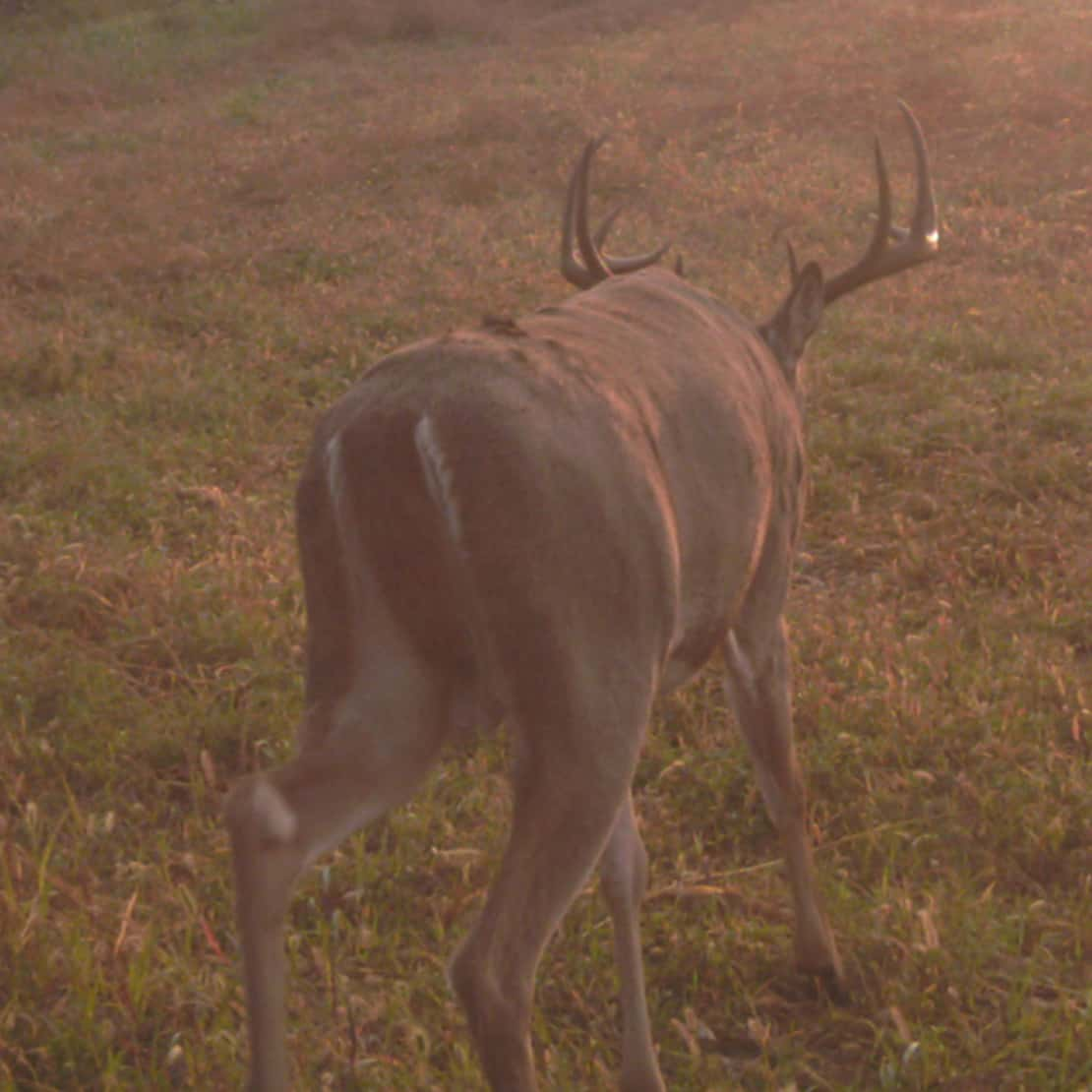
By Nick Simonson
Photo: A 5×5 whitetail buck makes his move into the setting sun. This Friday, more than 60,000 hunters are expected to take the field in the 2019 firearms deer season. Simonson Photo.
With the opening of the firearm deer season at noon on Fri. Nov. 8, more than 60,000 hunters will take to the field, pursuing a rebounding population of both whitetail and mule deer across the state which are bouncing back from a difficult stretch at the turn of the decade.
Buoyed by recent easier winters, growing deer populations have allowed for more tags (65,500 firearm licenses) to be issued by the North Dakota Game & Fish Department (NDG&F) this season and with more than 791,000 acres of Private Land Open to Sportsmen (PLOTS) access is improving as well.
While wet conditions from recent weather may challenge hunters on the opener, and concerns such as the spread of Chronic Wasting Disease (CWD) in the western portion of the Peace Garden State are front of mind, for the most part, sportsmen are set for a solid firearms deer hunting season this November.
Outlook & Activity Up
“The outlook for the deer season should be good,” relayed Jason Smith, NDG&F Big Game Biologist, “we use a variety of population indices to monitor trends and based on information that we have and that we’ve collected, there are apparently good numbers on the landscape,” he concluded.
The placement of North Dakota’s firearms deer season in November coincides with the rut, or peak breeding period, in which bucks seek out does for mating, and at times become extremely active during daylight hours and less secretive in their movements, giving hunters a better chance of encountering them during the designated hunting times of one half hour before sunrise until a half hour after sunset. Behaviors include marking trees with their antlers, forming rubs in the bark which help mark their territory, and making indentations in the ground with their hoofs, called scrapes, which they then urinate on to disseminate scent from glands on their legs to receptive females in the area and establish a territory.
Both forms of rut-related sign can be used by hunters to deduce increased activity in an area and determine prime travel corridors for deer.
“Biologically speaking [the rut is] the breeding season for deer and it’s triggered by photoperiod – or the amount of daylight during a 24-hour period – as far as North Dakota goes, it’s important to note that there’s a lead in and taper off of the rut, but the peak generally falls around Nov. 15,” Smith explained, adding, “we’re getting reports of decent deer activity, seeing bucks out moving around and cruising, working scrapes and fighting, we’ve had a few reports of deer found locked up…and that rut activity is great, because deer are moving around more during the daylight hours and that makes them more visible and more prone to harvest.”
Wet Conditions, CWD Concerns
With rain amounts three to five times above normal for much of the state from Sep. 1 through Nov. 1, and a slow-moving blizzard in mid-October which dumped up to thirty inches of snow over four days, significant accumulations of moisture in sloughs, lowlands and even traditionally dry areas where deer rest and hide, hunters may find their quarry on the move to different bedding areas than in previous seasons.
These wet conditions have also delayed harvest, leaving more standing cover for deer to take shelter and feed in without having to leave the protection of fields of taller crops, such as corn or sunflowers. As farmers hurry to get what they can off the landscape, Smith states hunters would be wise to be aware of the ongoing harvest process.
“There will be challenges and because of this travel will probably be affected, but the cold temperatures should help that out some,” Smith warned, “be respectful of the land and the landowners, our farmers and ranchers that are out there right now are extremely busy this time of year, especially with all the delays caused by the weather; so if you’re out and about and you’re hunting, be aware of your impacts on the landscape, don’t travel in areas that look bad and basically use common sense,” he concluded.
In addition to the saturated landscape, a growing concern for the state’s deer herds is CWD. With new positive tests confirmed in northwestern North Dakota this fall, more units are undergoing the heightened sampling process, along with baiting and carcass transport restrictions than in any other season before. In addition, all of those units in the eastern third of the state located on or east of Highway 281, including units 1 and 2E, will be part of the NDG&F’s annual sampling process looking to confirm that the fatal neurological disease, caused by a prion and transferred between deer, moose and elk through saliva or mucus, is not in the region. So far, it has only been detected in a handful of units in the southwest and northwest portions of North Dakota.
“I would recommend that hunters who would like to learn more seek out that information, and a real good place to start would be our NDG&F webpage, there’s actually a whole section dedicated to CWD on our website (gf.nd.gov/cwd),” Smith suggested, “CWD has not been found in the eastern third of the state and our surveillance goal in this area is to confidently say it is not present in the area, to do that we need to continue to test a lot of deer to reach that conclusion so it’s important for hunters to consider dropping of their deer heads at collection sites to have them tested,” he requested.
For more information on the 2019 firearms deer season, visit the NDG&F deer hunting webpage (gf.nd.gov/hunting/deer).
